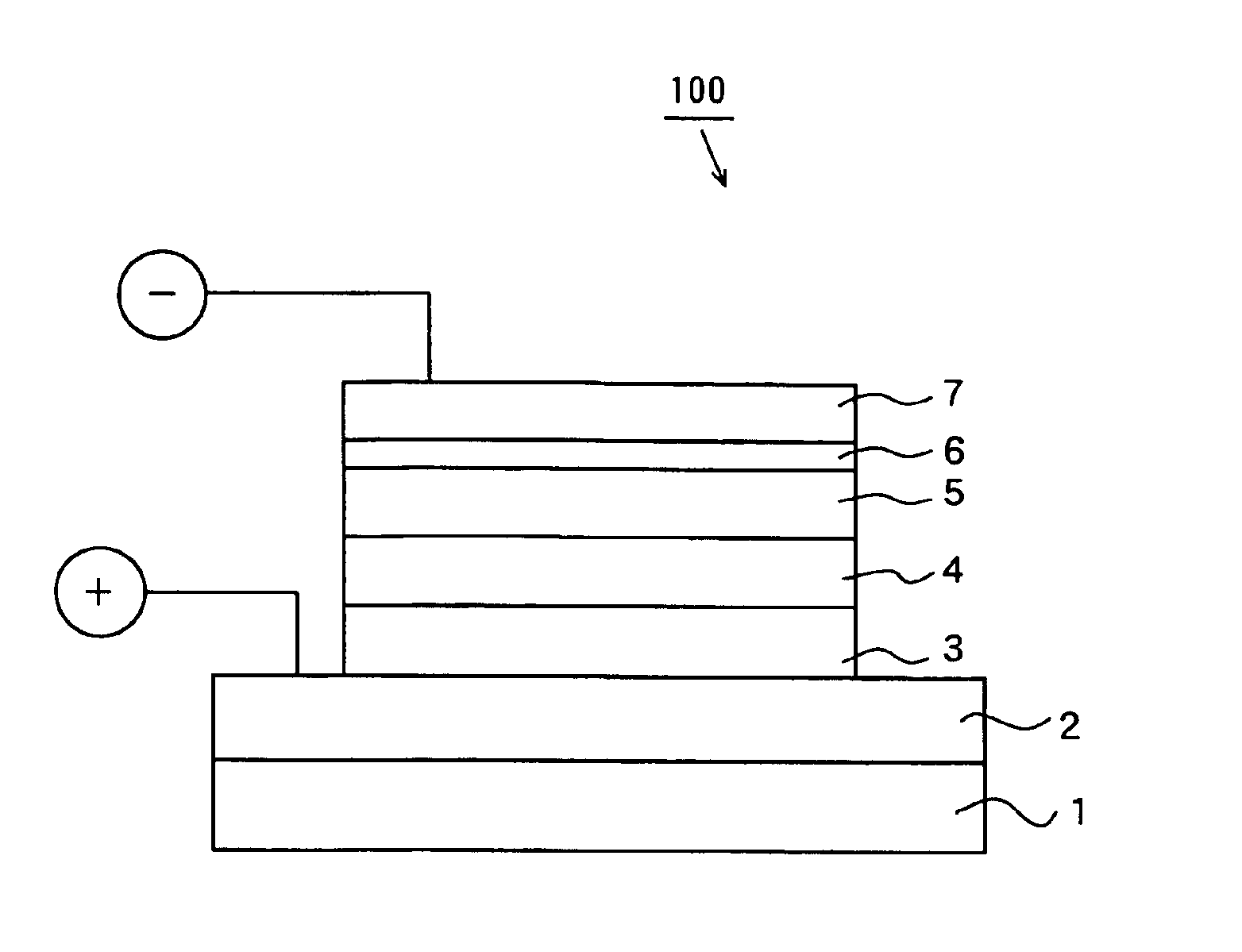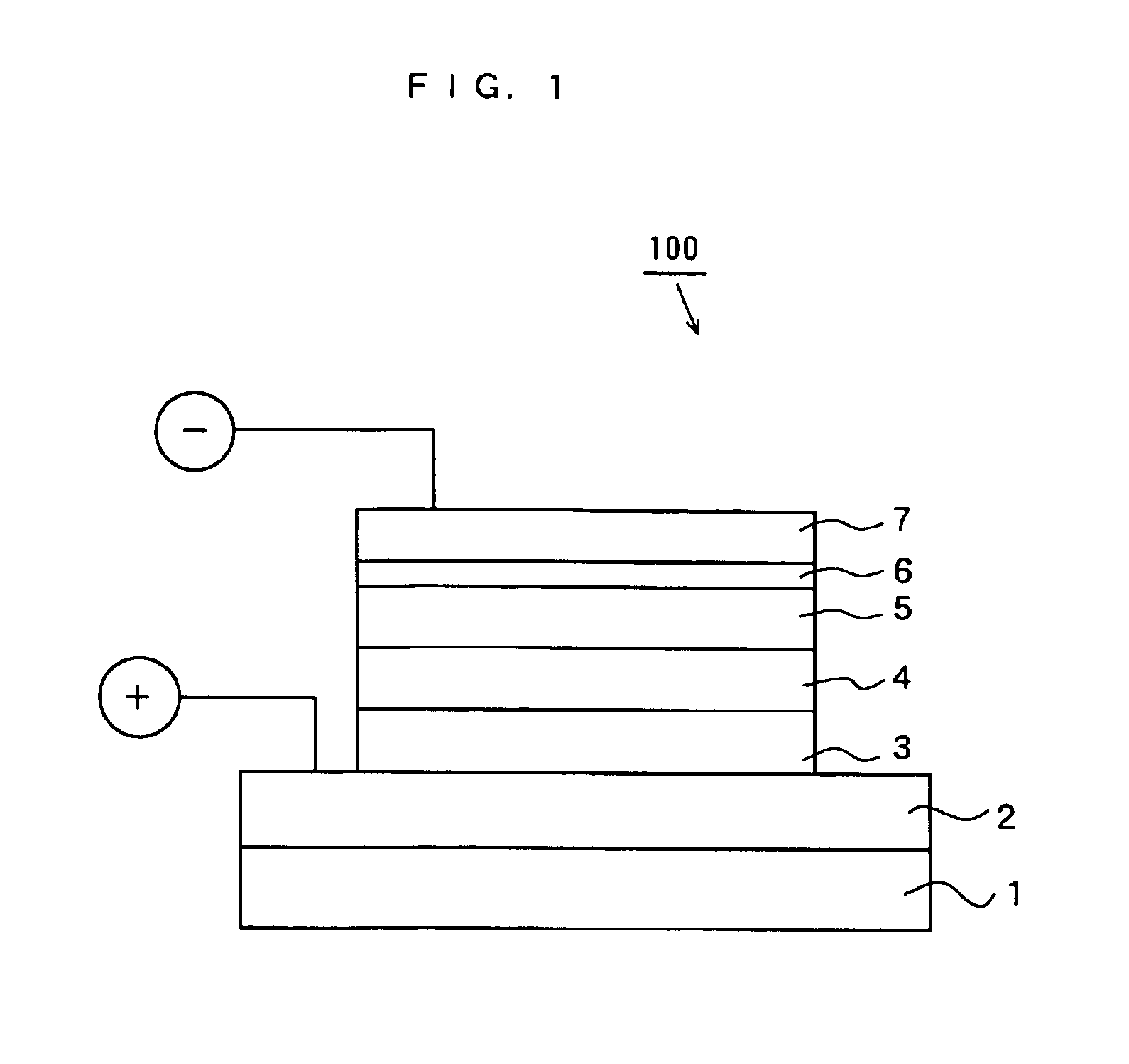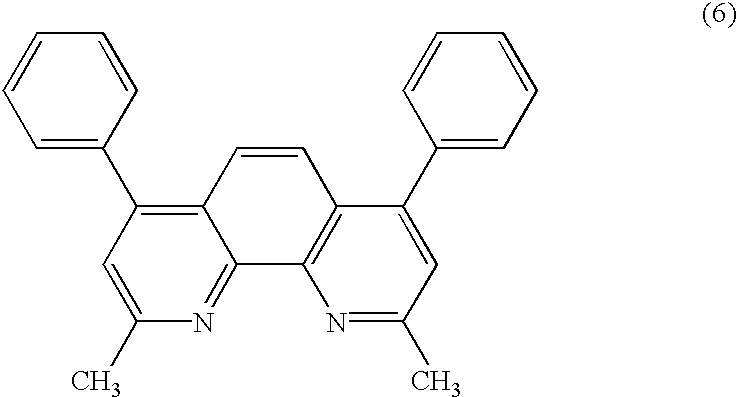Organic electroluminescent device
a technology of electroluminescent devices and electroluminescent devices, which is applied in the direction of discharge tube luminescent screens, other domestic articles, natural mineral layered products, etc., can solve the problems of unstable light emission, device production using bcp tends to suffer from current leakage, and bcp is prone to crystallization, etc., to achieve stable light emission, high luminescent efficiency, and high luminance
- Summary
- Abstract
- Description
- Claims
- Application Information
AI Technical Summary
Benefits of technology
Problems solved by technology
Method used
Image
Examples
examples
[0050]Organic EL devices according to Inventive Examples 1 to 4 and Comparative Example 1 were manufactured and measured for their luminescent characteristics.
##ventive examples 1 to 4
Inventive Examples 1 to 4
[0051]In Inventive Examples 1 to 4, such an organic EL device was used that a hole injection electrode (anode) 2, a hole transport layer 3, a luminescent layer 4, a hole blocking layer 5, an electron transport layer 6 and an electron injection electrode (cathode) 7 was stacked in this order on a glass substrate 1.
[0052]In this case, the hole injection electrode 2 in the organic EL device is as thick as 1000 Å and composed of indium-tin oxide (ITO). The hole transport layer 3 is as thick as 500 Å and composed of N,N′-di(naphthalen-1-yl)-N,N′-diphenyl-benzidine) (hereinafter referred to as “NPB”) having a molecular structure represented by the following formula (7):
[0053]The luminescent layer 4 is as thick as 100 Å and it contains 4,4′-bis(carbazol-9-yl)-biphenyl (hereinafter referred to as “CBP”) having a molecular structure represented by the following formula (8) as a host material and tris(2-phenylpyridine)iridium (hereinafter referred to as “Ir(ppy)3”) h...
PUM
| Property | Measurement | Unit |
|---|---|---|
| ionization potential | aaaaa | aaaaa |
| ionization potential | aaaaa | aaaaa |
| luminance | aaaaa | aaaaa |
Abstract
Description
Claims
Application Information
 Login to View More
Login to View More - R&D
- Intellectual Property
- Life Sciences
- Materials
- Tech Scout
- Unparalleled Data Quality
- Higher Quality Content
- 60% Fewer Hallucinations
Browse by: Latest US Patents, China's latest patents, Technical Efficacy Thesaurus, Application Domain, Technology Topic, Popular Technical Reports.
© 2025 PatSnap. All rights reserved.Legal|Privacy policy|Modern Slavery Act Transparency Statement|Sitemap|About US| Contact US: help@patsnap.com



